Learn how to convert any recipe to sourdough with a few easy tricks. Eating healthy fermented grains doesn’t have to be challenging. Just use this simple process to convert your favorite recipes to sourdough.
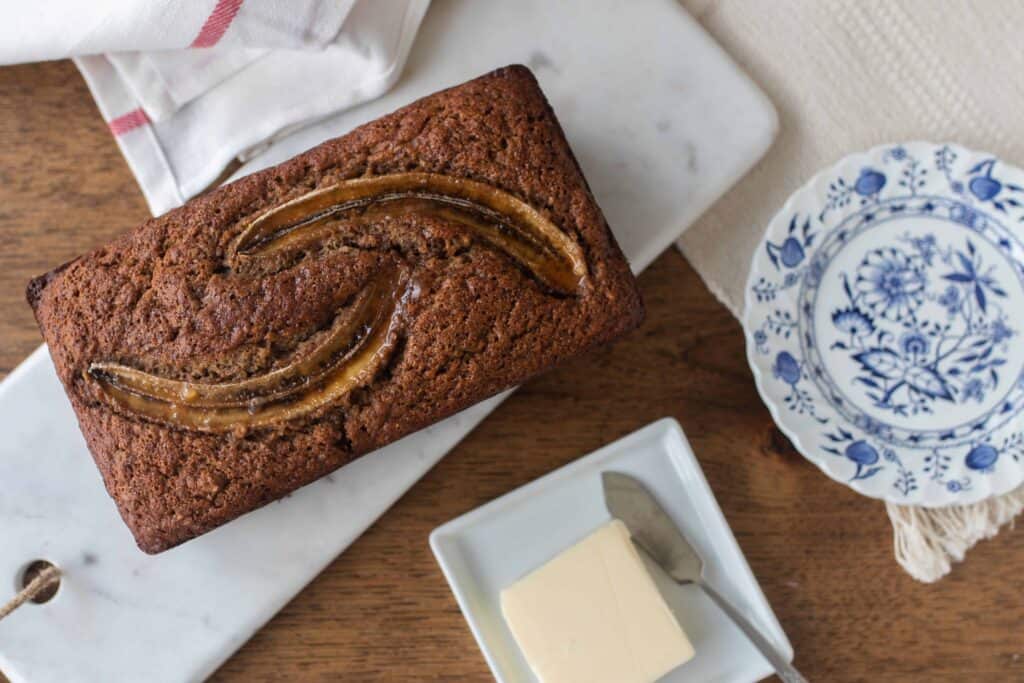
If I had a food love language, I’m sure it would be sourdough. And by this point, you’ve all figured this out.
It’s been a 10-year love affair with this healthy, ancient way of eating grains. Once converted, it is truly hard to go back. Our family is never going back.
Honestly though, sourdough doesn’t have the best reputation. People have a misconception that sourdough is difficult and takes a long time.
You might be imagining yourself spending several hours a day kneading dough, or even hunkered over your bread bowl with your sourdough instructions, trying to troubleshoot your dough like a bad chemist.
That is just not the case. Sourdough has simplified meal making and food prep dramatically for our family.
Converting a recipe is actually quite simple. You may have to tweak it a bit, but it is really worth it. Between the health benefit of easier digestion and the greater depth of flavor, you’ll be thankful you made the switch.
There are multiple factors when considering converting a recipe to sourdough. Consider the type of recipe, how much liquid and flour, and whether or not another leavener may be added.
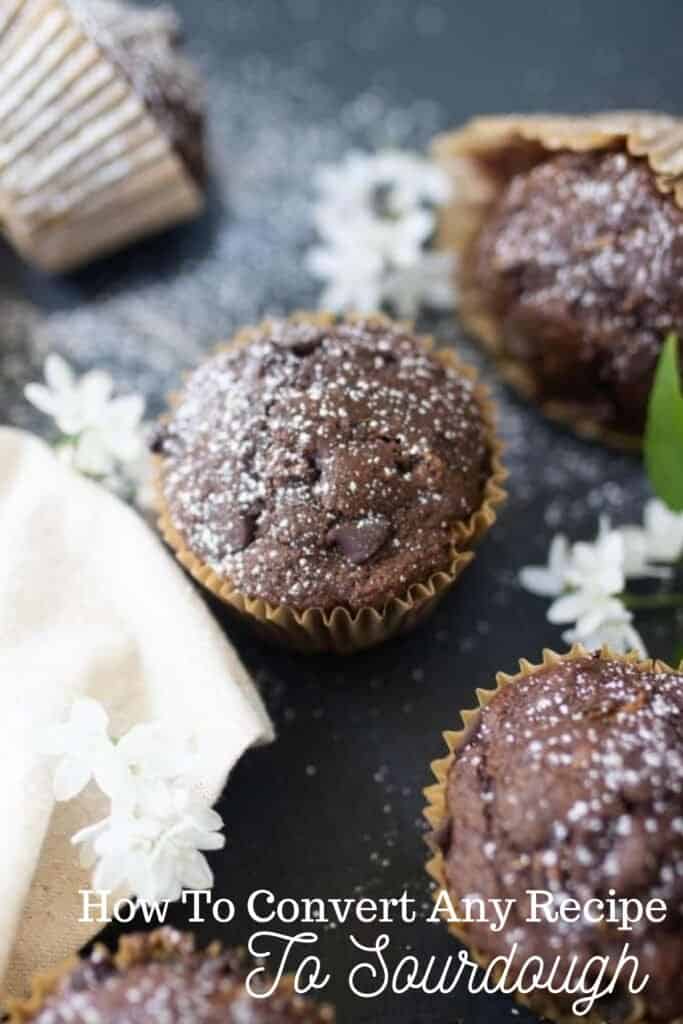
Why would you want to convert a recipe to sourdough?
- Flavor: Sourdough adds a delicious tang and complexity to grain products. From savory to sweet, the dimension added can’t compare with regular wheat products. Once you switch to eating traditionally fermented grains, regular grains seem sub-par and lacking flavor.
- Health: Switching to grains fermented with sourdough starter reduces the amount of phytic acid present in the grains, and allows the nutrients (like folate) to become more bio-available. Your body then can more easily absorb these nutrients.
- Digestibility: Fermented grains actually contain less gluten than unfermented. The good bacteria and yeast help break down the gluten, making it easier for your body to digest. Those who have difficulty digesting grains may be able to tolerate long-fermented sourdough products. Those with celiac disease still should avoid any glutinous grains, even fermented ones.
How To Convert Any Recipe To Sourdough:
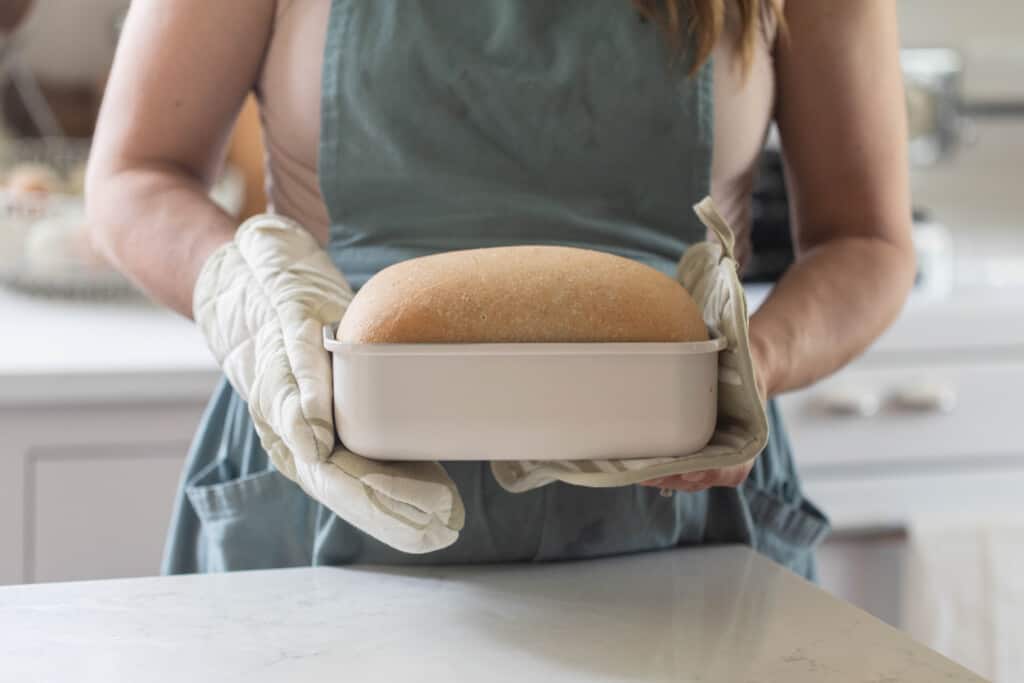
Yeast Recipes:
When I started my sourdough journey, I took the yeast bread recipe I had been using and adjusted to work with sourdough.
So, I know it is possible to take your favorite yeast bread recipe and make it using the wild yeast from sourdough starter instead!
If you’d like to do this with any of your go-to recipes, there are three basic rules I follow.
- Swap out one packet of yeast for a half cup of starter.
- Reduce the liquid by ⅓ cup + one tablespoon and reduce the flour by ⅓ cup + one tablespoon.
- Increase rise time, usually double.
Want to know how I came up with this super scientific recipe conversion? I simply added ⅓ cup + one tablespoon of flour and water to a bowl, and measured it. This combination equals exactly a half cup of “sourdough starter”, so we are simply adding the starter to the recipe and taking the liquid and flour volume back out.
You can use this same process to work with your own conversions for different types of flours and recipes.
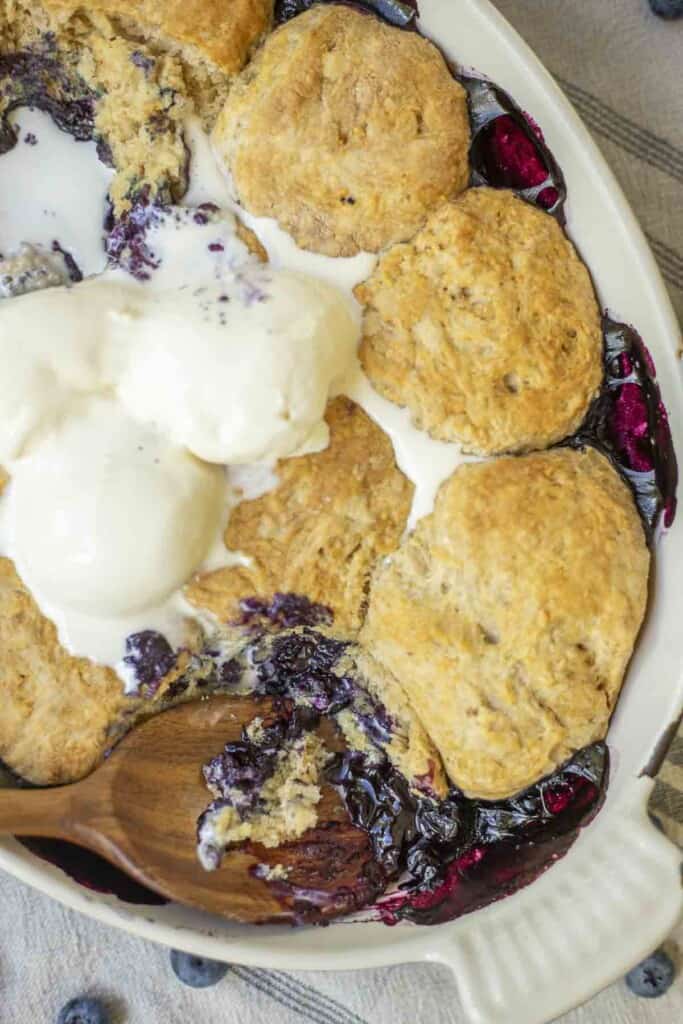
Non-Yeast Recipes:
There are many quick-bread recipes that work well when converted to sourdough, like pancakes, crepes, muffins, and other quick breads (hello, banana bread).
Now this can be a little trickier since many non-yeast recipes (like cookies, quick breads, etc) don’t contain a lot of liquid. For recipes like this, I would suggest adding a half a cup of sourdough starter, and possibly increasing the amount of flour a bit.
I say possibly because you may be able to get away with adding 1/2 cup of starter and not having to do any else differently to the recipe.
For other recipes, you could possibly reduce the amount of oil added while also adding more flour. I would suggest trying 1/3 cup for both.
Honestly, this conversion works best for yeast breads, but can be done with others as well. If all else fails, I have just about every sourdough recipe you could think of on the blog.
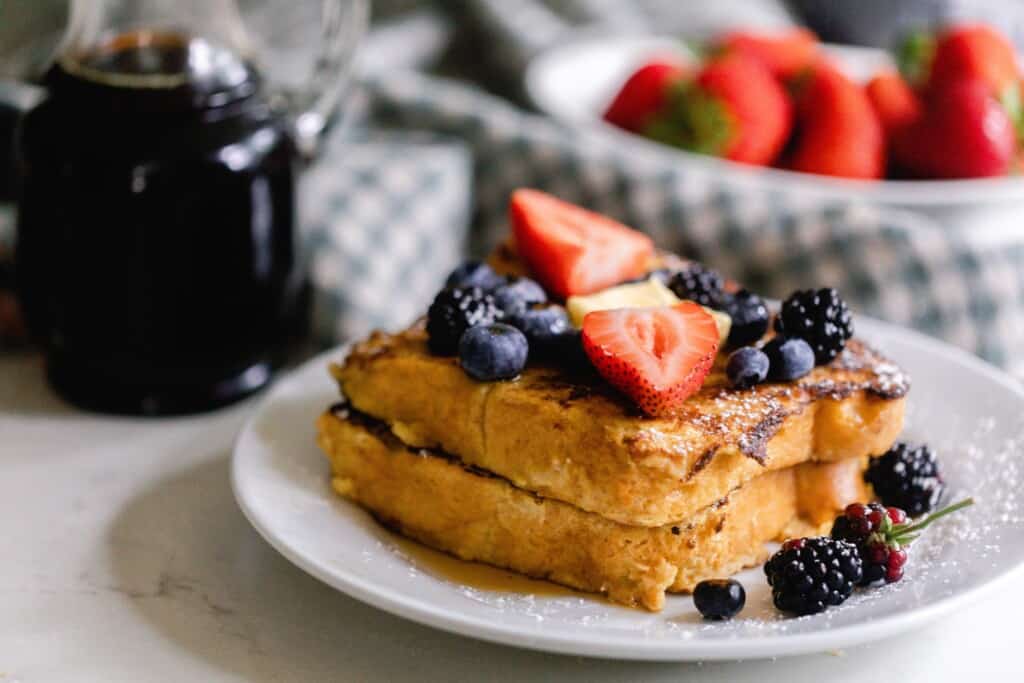
The hydration of your starter matters when making these adjustments!
The conversion example above is based on a sourdough starter fed at 100% hydration. I feed my starter equal parts flour and water.
The amount of flour and water used is based on the amount of starter I already have. But the ratio of flour to water never changes.
If you feed your starter a different ratio of flour to water, your recipes will need to be adjusted accordingly.
You can also use sourdough starter in your quick bread recipes as well!
The basic principle given previously still works here: add starter, reduce flour and water to equal the volume of the starter added. ½ cup starter at 100% hydration = ⅓ cup + one tablespoon of flour and water.
Try Some Of Our Favorite Recipes
- Sourdough Brownies
- Buffalo Cauliflower Wings
- Sourdough Strawberry Cream Cheese Cobbler
- Easy Artisan Bread
- Sourdough Banana Bread
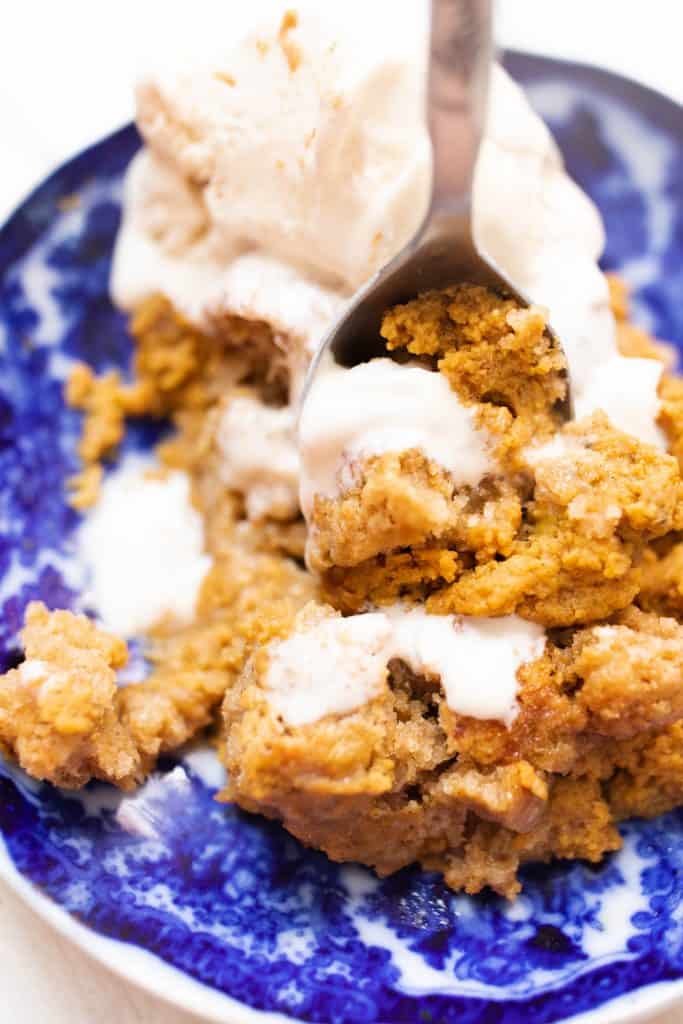
Why does sourdough need a longer rise time?
Typically, rise time will take about double the time, as the natural yeasts and bacteria take more time to develop than commercially developed yeast. While a yeast bread may take 1-2 hours to rise, give your sourdough recipe at least 4 hours.
If you are making a bread recipe, make sure to double both rises. The bulk rise, and the second rise after shaping.
With sourdough, you can even do longer rises in the refrigerator to help develop flavor without over fermenting.
For bread, you would allow a bulk ferment after starting the dough, and then a second ferment in the fridge, covered with plastic, for up to 24 hours.
Differences in rising time will change substantially depending on the type of recipe, if it contains other leaveners like baking soda, the environment it is rising in, etc.
FAQ:
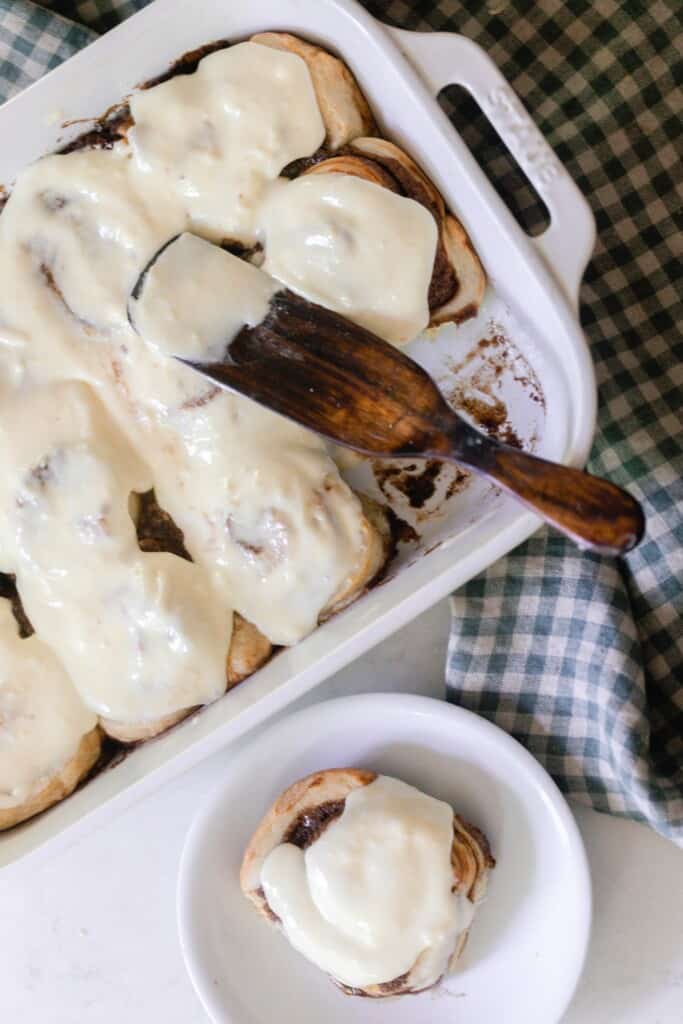
How much sourdough starter equals a packet of yeast?
A packet of yeast roughly equals 1/2 cup of sourdough starter in a recipe.
Is it cheaper to buy or make sourdough?
It is much cheaper to make your own sourdough bread compared to buying it.
What is the ratio of sourdough starter to baking?
While many bakers may choose a different ratio, the most common is one part flour to one part water, to one part sourdough starter (1:1:1)
Sourdough might sound complicated, but most new processes do. Take some time to read and learn about sourdough, give your own starter a try, and I promise, you’ll find it to be a simpler skill than expected.
It’s an incredibly beneficial practice, both for your health, and for the depth of flavors you build into your recipes.
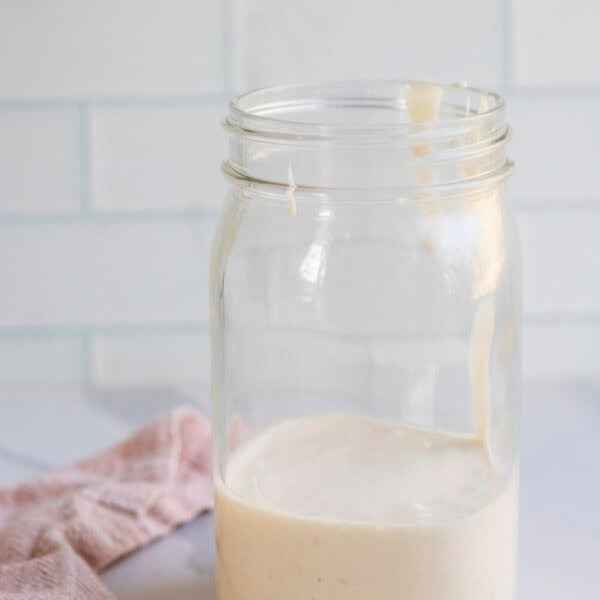
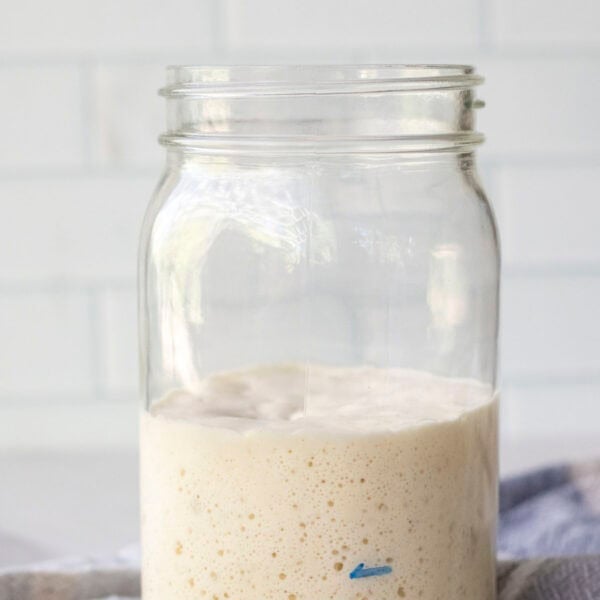
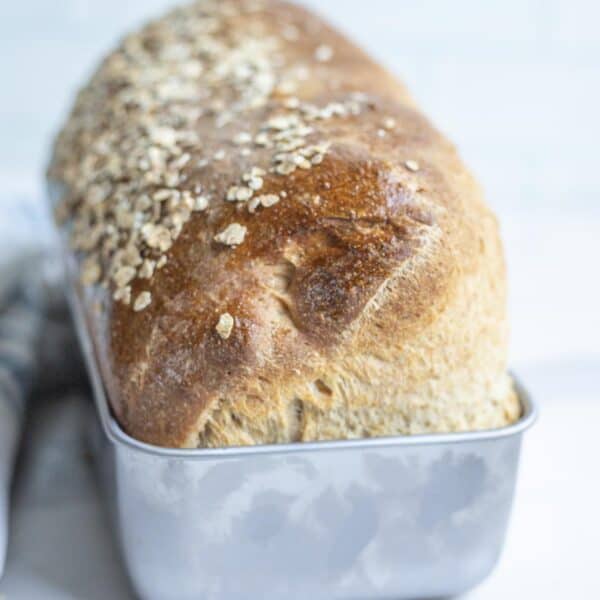
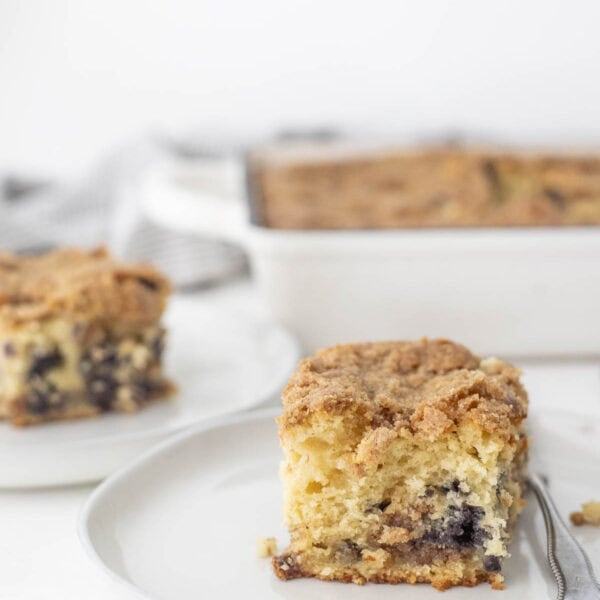






This is so helpful! I’ve been wondering if there was a simple way to make this happen so I don’t have to find all new recipes.
I’m looking at converting a muffin recipe, it calls for several eggs and baking powder. I’d drop the baking powder, correct? But what do I do about the eggs?
In this case, muffins need the baking powder. In other recipes here, what Lisa does is mix flour, oil, sugar and the starter/discard and lets it ferment over night, not for rise, but for digestion. Later, she adds the rest of the ingredients that the recipe asks for and bakes (including baking powder).
In converting your recipe to a sourdough recipe you removed the oil and honey but you didn’t say why you did that. I’m a novice at sourdough(ing) so I’m wondering if those types of ingredients fight the process or if you, through trial and error, found they were either not necesssary (for your taste) or ??
Oops read other comments. Makes sense.
Thanks for sharing! Does the time that its good for change?
This is so helpful! I’ve always wondered how to make this happen!
Your conversion for the bread removed ALL honey? And coconut oil…
They obviously as liquids add to moisture content, however they also add to taste…but are REMOVED?
Sourdough bread gets all its taste from the starter. There’s no fat or sweetener in sourdoughs. It also was a poor persons bread. If you had butter, you spread it on afterwards. If not, you just ate it plain. It’s wonderful to sop up egg yolks with too. Or dunk/float in soups/stews. Makes great croutons (salad dressing would be on this).
I love fat and honey in my fresh ground, 100% wholegrain yeast breads, esp rolls or challah, but sourdough is a different bread.
I just wish it was wholegrain. Ppl want fluffy sourdoughs and I don’t think that’s required. I’m looking for a wholegrain one as I know ancient ppl didn’t have refined flours among the vast majority of the populace.
I make my sourdough bread with 20 oz of flour so I use about 8 oz of whole wheat flour and 12 oz of ap flour (40%) and add a bit more water (up to an ounce). Improves the taste a lot.
I’m wondering if this would work with my Ezekiel Bread recipe. I would love to be able to make it without conventional yeast.
This is helpful, thanks! Have you ever converted a croissant recipe to sourdough? Or do you have one?
Hello,
If I have no plans to use my sourdough starter, am storing it in the refrigerator and feeding it once a week, is it ok to feed the starter cold from the refrigerator and then immediately put it back into the refrigerator until the next week?
Thanks.
I do that with my gluten free starter made from sorghum flour, and it works just fine. It just takes longer to double and fall (and thus be ready for use again) than if it’s on the counter.
Rachel, will you share your gluten free starter recipe? And do you treat it like a sourdough starter?
Bethany
I have left my starter in the fridge for a month while on vacation and it works just as great when I get back home. When I’m home I feed my starter only when I need it. Hope that helps.
Such a usefull post Lisa.
I have a dinner rolls recipe that i love in the mean time i have stomach issues every time i eat them. I hope it work for that one.
Sirma